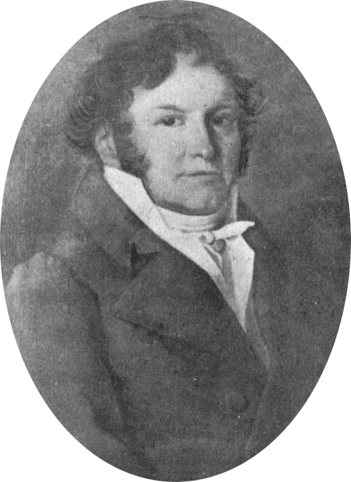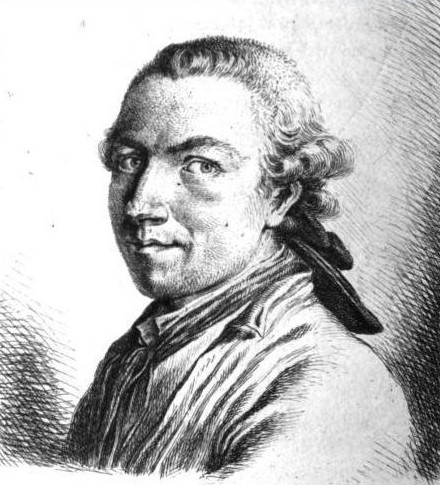|
Timeline Of Entomology – 1800–1850
19th century 1800 – an arbitrary date but it was around this time that systematists began to specialise. There remained entomological polyhistors – those who continued to work on the insect fauna as a whole. From the beginning of the century, however, the specialist began to predominate, harbingered by Johann Wilhelm Meigen's ''Nouvelle classification des mouches à deux aile'' (New classification of the Diptera) commenced in the first year of the century. Lepidopterists were amongst the first to follow Meigen's lead. The specialists fell into three categories. First there were species describers, then specialists in species recognition and then specialists in gross taxonomy. There were however considerable degrees of overlap. Also then, as now, few could entirely resist the lure of groups other than their own, and this was especially true of those in small countries where they were the sole 'expert', and many famous specialists in one order also worked on others. Hence, fo ... [...More Info...] [...Related Items...] OR: [Wikipedia] [Google] [Baidu] |
Gravenhorst Johann Ludwig Christian 1777-1857
Johann Ludwig Christian Carl Gravenhorst (14 November 1777 – 14 January 1857), sometimes Jean Louis Charles or Carl, was a German entomologist, herpetologist, and zoologist. Life Gravenhorst was born in Braunschweig. His early interest in insects was encouraged by two of his professors, both amateur entomologists. He entered the University of Helmstedt to study law in 1797. However, the death of his father two years later left him a great fortune; so he was able to change his direction. He enrolled at the University of Göttingen where he followed the courses of Johann Friedrich Blumenbach. He returned to present his thesis to Helmstädt on a subject of entomology. He went to Paris in 1802 and there met Georges Cuvier, Pierre André Latreille, and Alexandre Brongniart. Parallel to his studies, he assembled, thanks to his financial means, a very important natural history collection. In 1805, he obtained a professorial chair in Göttingen and published the following ... [...More Info...] [...Related Items...] OR: [Wikipedia] [Google] [Baidu] |
Pisa
Pisa ( , or ) is a city and ''comune'' in Tuscany, central Italy, straddling the Arno just before it empties into the Ligurian Sea. It is the capital city of the Province of Pisa. Although Pisa is known worldwide for its leaning tower, the city contains more than twenty other historic churches, several medieval palaces, and bridges across the Arno. Much of the city's architecture was financed from its history as one of the Italian maritime republics. The city is also home to the University of Pisa, which has a history going back to the 12th century, the Scuola Normale Superiore di Pisa, founded by Napoleon in 1810, and its offshoot, the Sant'Anna School of Advanced Studies.Scuola Superiore Sant'Anna di Pisa Information statistics History ...
|
Strasbourg
Strasbourg (, , ; german: Straßburg ; gsw, label=Bas Rhin Alsatian, Strossburi , gsw, label=Haut Rhin Alsatian, Strossburig ) is the prefecture and largest city of the Grand Est region of eastern France and the official seat of the European Parliament. Located at the border with Germany in the historic region of Alsace, it is the prefecture of the Bas-Rhin department. In 2019, the city proper had 287,228 inhabitants and both the Eurométropole de Strasbourg (Greater Strasbourg) and the Arrondissement of Strasbourg had 505,272 inhabitants. Strasbourg's metropolitan area had a population of 846,450 in 2018, making it the eighth-largest metro area in France and home to 14% of the Grand Est region's inhabitants. The transnational Eurodistrict Strasbourg-Ortenau had a population of 958,421 inhabitants. Strasbourg is one of the ''de facto'' four main capitals of the European Union (alongside Brussels, Luxembourg and Frankfurt), as it is the seat of several European insti ... [...More Info...] [...Related Items...] OR: [Wikipedia] [Google] [Baidu] |
Jean Frederick Hermann
Jean may refer to: People * Jean (female given name) * Jean (male given name) * Jean (surname) Fictional characters * Jean Grey, a Marvel Comics character * Jean Valjean, fictional character in novel ''Les Misérables'' and its adaptations * Jean Pierre Polnareff, a fictional character from ''JoJo's Bizarre Adventure'' Places * Jean, Nevada, USA; a town * Jean, Oregon, USA Entertainment * Jean (dog), a female collie in silent films * "Jean" (song) (1969), by Rod McKuen, also recorded by Oliver * ''Jean Seberg'' (musical), a 1983 musical by Marvin Hamlisch Other uses * JEAN (programming language) * USS ''Jean'' (ID-1308), American cargo ship c. 1918 * Sternwheeler Jean, a 1938 paddleboat of the Willamette River See also *Jehan * * Gene (other) * Jeanne (other) * Jehanne (other) * Jeans (other) * John (other) John is a common English name and surname: * John (given name) * John (surname) John may also refer to: New Testa ... [...More Info...] [...Related Items...] OR: [Wikipedia] [Google] [Baidu] |
Thomas Marsham
Thomas Marsham (1748–26 November 1819) was an English entomologist, specializing on beetles. Biography He married a Miss Symes of Ufford, Northants, and had two daughters. He was Secretary to the West India Dock Company for many years and during the Napoleonic Wars became an officer in the volunteer corps of the Home Guard in 1802. He was a founder member of the Linnean Society and its Secretary from 1788–98 and Treasurer from 1798-1816. He was a friend of James Francis Stephens, William Kirby and Alexander Macleay . Works *Observations on the ''Phalaena lubricipeda'' of Linnaeus and some other moths allied to it' ''Transactions of the Linnean Society'', 1, 1791, pp. 67–75. *System of Entomology, ''Hall's Royal Encyclopaedia '' (1788), reprinted 1796. *''Entomologia Britannica, sistens Insecta Britanniae indigena secundum Linneum deposita. Coleoptera''., 1802. A collaborative work listing 1,307 species. Further voloumes on other orders were intended but never ... [...More Info...] [...Related Items...] OR: [Wikipedia] [Google] [Baidu] |
Jacob Sturm
Jacob Sturm (21 March 1771 – 28 November 1848) was a leading engraver of entomological and botanical scientific publications in Germany at the end of the 18th and beginning of the 19th century. He was born and lived in Nuremberg and was the only son of engraver Johann Georg Sturm (1742-1793), who trained him in drawing and copperplate engraving. Sturm became a celebrated insect collector and founded the Nuremberg Society for Natural History. His entomological and botanical plates are very accurately drawn and show minute details and enjoyed a great popularity among naturalists. As most of his works were published in a small format, they could be purchased by a larger public and they were very popular. During this period, Nuremberg was the centre of natural history book production in Germany. "The book ''Deutschlands Flora'',lit.: ''Germany's flora in pictures from nature with descriptions. Nuremberg, printed at the expense of the author'' 1798–1862. 163 parts (in 136 vol ... [...More Info...] [...Related Items...] OR: [Wikipedia] [Google] [Baidu] |
Caspar Erasmus Duftschmid
Caspar (or Kaspar) Erasmus Duftschmid was an Austrian naturalist and physician who made significant contributions to entomology, especially Coleoptera. He was born in Gmunden on 19 November 1767 and died in Linz on 17 December 1821. His best-known work, introducing many new genera and species is ''Fauna Austriaca. Oder Beschreibung der österreischischen Insekten für angehande Freunde der Entomologie'', which was published in three volumes (in 1805, 1812, and 1825) at Linz and Leipzig Leipzig ( , ; Upper Saxon: ) is the most populous city in the German state of Saxony. Leipzig's population of 605,407 inhabitants (1.1 million in the larger urban zone) as of 2021 places the city as Germany's eighth most populous, as wel .... His collection of Coleoptera and Lepidoptera from Upper Austria is iOberösterreiches Landesmuseum - BiologiezentrumThe natural history museum of Upper Austria (in German), Linz. The labels are lost and the insects incorporated into the general col ... [...More Info...] [...Related Items...] OR: [Wikipedia] [Google] [Baidu] |
Augsburg
Augsburg (; bar , Augschburg , links=https://en.wikipedia.org/wiki/Swabian_German , label=Swabian German, , ) is a city in Swabia, Bavaria, Germany, around west of Bavarian capital Munich. It is a university town and regional seat of the ''Regierungsbezirk'' Schwaben with an impressive Altstadt (historical city centre). Augsburg is an urban district and home to the institutions of the Landkreis Augsburg. It is the third-largest city in Bavaria (after Munich and Nuremberg) with a population of 300,000 inhabitants, with 885,000 in its metropolitan area. After Neuss, Trier, Cologne and Xanten, Augsburg is one of Germany's oldest cities, founded in 15 BC by the Romans as Augsburg#Early history, Augusta Vindelicorum, named after the Roman emperor Augustus. It was a Free Imperial City from 1276 to 1803 and the home of the patrician (post-Roman Europe), patrician Fugger and Welser families that dominated European banking in the 16th century. According to Behringer, in the sixteen ... [...More Info...] [...Related Items...] OR: [Wikipedia] [Google] [Baidu] |
Jacob Hübner
Jacob Hübner (20 June 1761 – 13 September 1826, in Augsburg) was a German entomologist. He was the author of ''Sammlung Europäischer Schmetterlinge'' (1796–1805), a founding work of entomology. Scientific career Hübner was the author of ''Sammlung Europäischer Schmetterlinge'' (1796–1805), a founding work of entomology. He was one of the first specialists to work on the European Lepidoptera. He described many new species, for example ''Sesia bembeciformis'' and ''Euchloe tagis'', many of them common. He also described many new genus, genera. He was a designer and engraver and from 1786 he worked for three years as a designer and engraver at a cotton factory in Ukraine. There he collected butterflies and moths including descriptions and illustrations of some in ''Beiträge zur Geschichte der Schmetterlinge'' (1786–1790) along with other new species from the countryside around his home in Augsburg. Hübner's masterwork "Tentamen" was intended as a discussion document. I ... [...More Info...] [...Related Items...] OR: [Wikipedia] [Google] [Baidu] |
Jakob Heinrich Laspeyres
Jakob Heinrich Laspeyres (; 9 April 1769, Berlin – 28 November 1809, Berlin) was a German entomologist especially interested in Lepidoptera. He was a Bürgermeister in Berlin. Laspeyres collection is in Museum für Naturkunde. The genus
Genus ( plural genera ) is a taxonomic rank used in the biological classification of extant taxon, living and fossil organisms as well as Virus classification#ICTV classification, viruses. In the hierarchy of biological classification, genus com ... '' [...More Info...] [...Related Items...] OR: [Wikipedia] [Google] [Baidu] |
Zürich
Zürich () is the list of cities in Switzerland, largest city in Switzerland and the capital of the canton of Zürich. It is located in north-central Switzerland, at the northwestern tip of Lake Zürich. As of January 2020, the municipality has 434,335 inhabitants, the Urban agglomeration, urban area 1.315 million (2009), and the Zürich metropolitan area 1.83 million (2011). Zürich is a hub for railways, roads, and air traffic. Both Zurich Airport and Zürich Hauptbahnhof, Zürich's main railway station are the largest and busiest in the country. Permanently settled for over 2,000 years, Zürich was founded by the Roman Empire, Romans, who called it '. However, early settlements have been found dating back more than 6,400 years (although this only indicates human presence in the area and not the presence of a town that early). During the Middle Ages, Zürich gained the independent and privileged status of imperial immediacy and, in 1519, became a primary centre of the Protestant ... [...More Info...] [...Related Items...] OR: [Wikipedia] [Google] [Baidu] |
Johann Rudolph Schellenberg
Johann Rudolph Schellenberg (4 January 1740, Basel – 8 June 1806, Töss, a district in the city of Winterthur) was a Swiss artist, writer and entomologist best known for his illustrations of insects. During his career he performed illustrative work for Johann Heinrich Sulzer, Johannes Gessner, Johann Kaspar Lavater and Johann Kaspar Füssli.Schellenberg, Johann Rudolf Historischen Lexikon der Schweiz He illustrated a number of entomological works, a few being: * Johann Heinrich Sulzer's ''Die Kennzeichen der Insekten, nach Anleitung des Königl. Schwed. Ritters und Leibarzts Karl Linnaeus. Mit einer Vorrede des Herrn Johannes Gessners'', published in Zurich in 1761. * |





